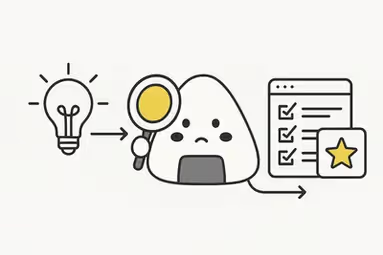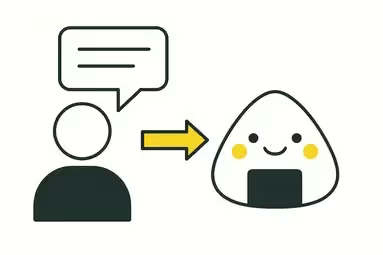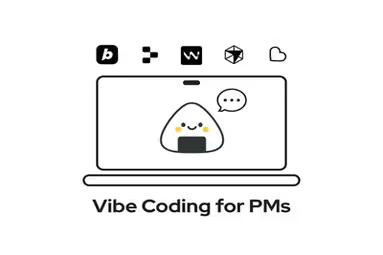.webp)
How to Test Product Assumptions Before Building Features
Learn proven assumption validation techniques that save product teams time and budget. Master MVP testing, Jobs-to-be-Done, and the Kano Model for better product decisions.

How to Test Product Assumptions Before Building Features: A Complete Guide for Product Managers
Product managers face a costly dilemma: 70% of product features fail to deliver expected business outcomes, according to McKinsey research. The culprit? Building solutions based on untested assumptions rather than validated insights.
The difference between successful products and expensive failures often comes down to one critical step: assumption validation. Before investing months of development time or significant budget into feature development, smart product teams test their hypotheses with minimal viable experiments.
This comprehensive guide will walk you through a proven framework for validating product assumptions, helping you build features users actually want while minimizing waste and maximizing impact.
Related: Product Discovery Process: Build Features Users Actually Need (case examples & templates)
Why Product Assumption Validation Matters
Every product decision starts with assumptions. Whether you're planning a product roadmap or prioritizing your product backlog, you're making educated guesses about user behavior, market needs, and solution effectiveness.
Consider this scenario: Your team identifies that users struggle with workflow efficiency. You assume that adding automation features will solve this problem. Without validation, you might spend three months building complex automation tools, only to discover users actually needed better task organization, not automation.
Assumption validation transforms these educated guesses into data-driven insights, reducing the risk of building features that miss the mark.
See it in practice: Driving Early Adoption for Lokalise’s Shopify Translation App (assumption mapping + feasibility/desirability/viability testing) and Launching a Live Chat MVP for Customer Care at Back Market.
Step 1: Map Your Critical Assumptions
Before testing anything, you need to identify what you're actually assuming. Assumption mapping is a crucial product discovery technique that helps product managers visualize and prioritize their hypotheses.
The Assumption Mapping Process
Create a simple 2x2 grid plotting Importance vs. Uncertainty:
- High Importance, High Uncertainty: Your riskiest assumptions requiring immediate testing
- High Importance, Low Uncertainty: Assumptions to validate quickly with low-effort tests
- Low Importance, High Uncertainty: Monitor but don't prioritize
- Low Importance, Low Uncertainty: Document but don't test actively
How-to guides: Mural’s intro to assumptions mapping and David Bland’s assumption mapping primer (see “assumption tests”).
Example Assumption Categories
For any product feature, typical assumptions include:
User Behavior Assumptions:
- Users will adopt this feature within their existing workflow
- The current process causes significant pain points
- Users are willing to change their current behavior
Technical Assumptions:
- The solution is technically feasible within our constraints
- Implementation complexity aligns with expected impact
- Integration won't disrupt existing functionality
Business Assumptions:
- This feature will drive our target metrics
- The solution addresses a monetizable problem
- Market timing is right for this approach
Step 2: Define Jobs-to-be-Done for Better Product Strategy
Shifting from features to user jobs transforms how you approach product development. The Jobs-to-be-Done (JTBD) framework helps product managers focus on user intent rather than surface-level requests.
Understanding the Job Statement
A well-defined job statement follows this format:"When [situation], I want to [motivation], so I can [expected outcome]."
Instead of focusing on what users say they want, JTBD reveals what they're actually trying to accomplish. This distinction is crucial for product-market fit.
Helpful primers: Thoughtbot’s JTBD overview and job story format (guide) and User Interviews’ JTBD field guide (overview).
Identifying Core Jobs
Users rarely hire your product for just one job. Typical job categories include:
Functional Jobs: The practical task users need to completeEmotional Jobs: How users want to feel during the process
Social Jobs: How users want to be perceived by others
For example, a user requesting "better reporting features" might actually be trying to:
- Functional: Quickly generate insights for stakeholder meetings
- Emotional: Feel confident presenting data
- Social: Appear competent and prepared to their team
Internal example: How we applied JTBD to align teams and roadmaps at DeepL.
Step 3: Design Minimum Viable Products (MVPs) for Learning
The MVP concept is often misunderstood in product management. An effective MVP isn't a scaled-down version of your final product—it's the smallest experiment that validates your core assumption.
Canonical definition: Eric Ries on Minimum Viable Product (Lean Startup).
MVP Design Principles
Start with the Riskiest Assumption: Test your most critical hypothesis first
Focus on Learning, Not Building: Design experiments to gather data, not impress users
Embrace Imperfection: Manual processes and workarounds are acceptable for early validation
MVP Testing Strategies
Prototype MVPs:
- Interactive mockups using tools like Figma or InVision
- Wizard of Oz testing where manual processes simulate automated features
- Concierge MVPs providing the service manually to early users
Digital MVPs:
- Landing page tests measuring interest before building
- Feature flags enabling gradual rollouts
- A/B testing different approaches simultaneously
Behavioral MVPs:
- User interviews and observational studies
- Analytics analysis of existing user behavior
- Competitor analysis and market research
Step 4: Implement Effective Feedback Loops
Measuring MVP success requires the right feedback mechanisms. The Kano Model provides a framework for understanding how different features impact user satisfaction.
The Kano Model for Product Analytics
Basic Needs (Must-Haves):
- If missing, users are frustrated
- If present, users expect them
- Test Question: "How would you feel if this feature disappeared?"
Performance Needs (Linear Satisfaction):
- Better performance = higher satisfaction
- Users can articulate these needs clearly
- Test Question: "How much would improving this feature matter to you?"
Delighters (Unexpected Value):
- Users don't expect these features
- High impact on satisfaction when present
- Test Question: "What surprised you positively about this experience?"
Helpful overviews: ProductPlan’s Kano Model explainer (guide) and Folding Burritos’ deep dive (complete guide).
Setting Up Success Metrics
Define clear success criteria before testing:
Leading Indicators: Early signals of feature adoption or engagement
Lagging Indicators: Long-term outcomes like retention or conversion
Qualitative Feedback: User sentiment and behavioral observations
Stakeholder-ready storytelling: How Storytelling Transforms Product Roadmap Planning.
Step 5: Generate and Test Solution Ideas Systematically
With validated assumptions and clear job statements, you can brainstorm solutions more effectively. This approach ensures your product backlog management focuses on high-impact features.
Solution Generation Framework
For Each Core Assumption:
- Brainstorm Multiple Solutions: Generate at least 3-5 different approaches
- Estimate Impact vs. Effort: Use a simple scoring system to prioritize
- Design Targeted Tests: Create specific MVPs for each promising solution
- Define Success Metrics: Establish clear criteria for moving forward
Example Testing Sequence
Week 1-2: Assumption mapping and JTBD interviews
Week 3-4: Design and launch initial MVPs
Week 5-6: Gather feedback and analyze results
Week 7: Decide on next iteration or pivot
This systematic approach prevents the common product management pitfall of building features based on the loudest stakeholder voice rather than validated user needs.
Advanced Validation Techniques for Product Teams
Stakeholder Alignment Through Validation
Use assumption validation to align stakeholders around data rather than opinions. When different teams have conflicting priorities, let user research guide decisions.
Stakeholder Validation Workshops:
- Map assumptions collectively across teams
- Agree on testing priorities and success metrics
- Review results together to make decisions
Continuous Validation in Agile Product Development
Integrate validation into your regular development cycle:
Sprint Planning: Include validation tasks in story estimationSprint Reviews: Present validation results alongside feature demos
Retrospectives: Discuss what assumptions proved wrong and why
Scaling Validation Across Product Teams
As your product organization grows, establish validation as a core competency:
Validation Playbooks: Document testing approaches for common scenarios
Testing Infrastructure: Build tools and processes for rapid experimentation
Team Training: Ensure all product managers understand validation techniques
Common Validation Mistakes to Avoid
Confirmation Bias: Testing only assumptions you hope are true
Over-Engineering MVPs: Building more than necessary to learn
Ignoring Negative Results: Continuing with invalidated assumptions
Testing Too Late: Validating after significant investment in development
Measuring Long-Term Validation Impact
Track how assumption validation improves your product management strategy:
Feature Success Rate: Percentage of features meeting success criteria
Time to Market: Reduced development cycles through early validation
Resource Efficiency: Less rework and fewer failed features
Stakeholder Confidence: Improved decision-making and team alignment
Ready to Transform Your Product Development Process?
Assumption validation isn't just a nice-to-have process—it's essential for building products that succeed in competitive markets. By systematically testing your hypotheses before committing resources, you'll ship features users actually want while minimizing waste.
The framework outlined here provides a starting point, but every product team needs customized approaches based on their unique challenges, user base, and business context.
Need help implementing assumption validation in your organization? ProductPeople specializes in helping product teams build validation capabilities that drive measurable business outcomes. Our proven methodologies have helped dozens of companies reduce feature failure rates by up to 60% while accelerating time-to-market.
FAQ
Product assumption validation is the process of testing your ideas about user needs, market demand, and solution effectiveness before you invest time and money in building a feature. It turns educated guesses into data-driven insights, which significantly reduces the risk of building features that no one wants.
Validation is crucial because most product features (up to 70%) fail to deliver expected business results. Unvalidated assumptions lead to wasted development resources, missed deadlines, and products that don't solve real customer problems. Testing assumptions helps ensure you are building the right features for your users.
The first step is to map your critical assumptions. You can do this using a simple 2x2 grid that plots assumptions by their Importance and Uncertainty. The assumptions that are both highly important and highly uncertain are your riskiest ones and should be tested first.
You can test assumptions using Minimum Viable Products (MVPs). An MVP isn't a scaled-down product, but the smallest possible experiment to gather data. This can be as simple as an interactive mockup, a landing page test, or manual "Wizard of Oz" testing. The goal is to learn, not to build a finished product.
The Jobs-to-be-Done (JTBD) framework helps you shift your focus from a user's stated request to their underlying motivation and desired outcome. By understanding the "job" a user is trying to get done, you can design features that truly address their needs, not just their surface-level requests.
Read More Posts
.webp)
Product Manager vs. Product Owner vs. Project Manager

Customer Interview Techniques for Better Product Decisions

How to Add Value in 2 Weeks: From Our Experience as Interim Product Managers

Introduction to Vibe Coding for Product Managers: From Idea to MVP

Communication Tips for Product Managers That Get Responses



